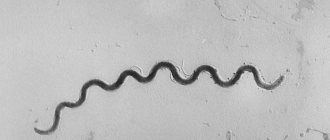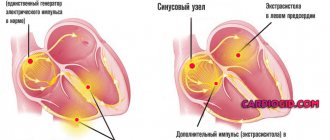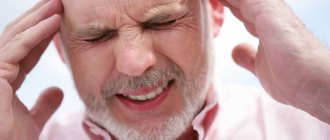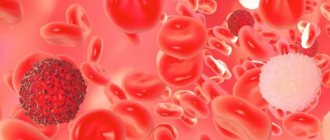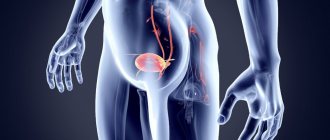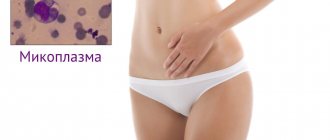The first signs and symptoms of a micro-stroke in men and women can appear both in old age with worn-out blood vessels, and before the age of 30 - the disease “gets younger” every year, and no one is immune from its development.
Important: you must be able to distinguish a stroke from a micro-stroke. Thus, the first term denotes a pathological state of the body, provoked by a deterioration in cerebral circulation with subsequent death of brain tissue. During a microstroke, brain functions are quickly restored (from several minutes to a day), this is its main difference from a stroke, which entails irreversible consequences.
Various strokes (hemorrhagic, ischemic), if first aid is not provided in a timely manner (especially in old age), lead to speech impairment, partial or complete paralysis, and can lead to death.
A microstroke, in turn, is a special case of cerebrovascular accident in combination with damage to the vascular system. As a rule, with a microstroke, small vessels are affected, blocked by a sclerotic plaque or small clusters of them. Since the area of blood supply to these small vessels is small, a small amount of brain tissue is damaged, which is why neurological symptoms are transient.
The first signs of a micro-stroke in women and men, as a rule, go unnoticed, because headache, nausea, vision problems and general weakness can be a consequence of other health problems. An untimely detected micro-stroke can lead to a number of serious complications - from circulatory disorders, decreased visual acuity to ischemic or hemorrhagic stroke of the brain.
Microstroke - what is it?
Attention. The term “ministroke” does not exist in the International Classification of Diseases. A pathological condition with these symptoms is officially referred to as a violation of cerebral blood flow.
Only this violation is transitory. That is, it is recoverable. And the pathology is abbreviated as TCI (transient cerebrovascular accident).
The disorder is accompanied by focal neurological signs. This phenomenon precedes a more serious illness such as a stroke.
The danger of a micro-stroke is that it is a harbinger of bigger problems. Moreover, among men of working age (from 20 to 54 years), PNMK is recorded in 25% of those who applied to clinics or were already hospitalized for examination or treatment.
According to statistics, it is also believed that a microstroke may represent the onset of a latent cerebrovascular disease.
To understand how a micro-stroke occurs, you need to understand that during an ischemic attack, the lumen of the artery is sharply blocked by a blood clot. The body independently removes the blockage, restoring healthy blood flow. Cerebral circulation normalizes within a few minutes, and the first signs of a microstroke disappear.
Acute oxygen deficiency, lasting several minutes, does not lead to the death of brain tissue. Therefore, after an attack, the first symptoms of a microstroke are quickly eliminated, the cells restore their activity without the development of neurological abnormalities.
It is possible to accurately verify the diagnosis only after several days have passed after the blockade. To do this, a computed tomography scan of the brain is performed, which reveals the presence of affected areas.
Manifestations of the disease depend on the location of the lesion in the brain. In the left-sided form, the activity of the right side of the body is disrupted. This form is diagnosed more often and is accompanied by impaired speech skills and intellectual abilities. With a right-sided stroke, speech is not impaired.
List of sources
- Gusev E.I., Skvortsova V.I. Cerebral ischemia. 2001, 327 pp., p. 6.
- Gudkova V.V., Meshkova K.S., Volkova A.V., Stakhovskaya L.V. Transient ischemic attack. Issues of diagnosis, treatment and prevention. Zemstvo doctor. 2013;3(20):18-21.
- Parfenov V.A., Ragimov S.K. Prognosis for transient ischemic attacks based on the results of one-year observation. Neurol. magazine. 2011; 2:23–26.
- Piradov M.A., Rumyantseva S.A. Neuroprotective therapy in angioneurology. Russian medical journal. 2005; 13: 980-983.
- Fedin A.I., Rumyantseva S.A. Antioxidant therapy for cerebrovascular disorders. Treatment of nervous diseases. 2001; 2: 7-12.
Classification
Stroke belongs to the group of cerebrovascular pathologies. Small forms are differentiated into the same types as strokes. The category depends on the location of the lesion and the course of the disease. Types of microstrokes are hemorrhagic and ischemic.
Hemorrhagic attacks appear after a heart attack, atherosclerosis, arterial hypertension. The patient's face becomes numb, headaches increase, and difficulties with movement are recorded. This type is rarely diagnosed, but provokes irreversible consequences.
Ischemic stroke develops as a result of damage to brain cells due to the appearance of a blood clot. The cause of blockage of the vessel is a sharp increase in blood pressure, skull trauma, and stress.
Symptoms include headache and loss of consciousness. The condition returns to normal after a few hours. Ischemic forms include atherothrombotic, embolic and lacunar strokes.
Manifestations in women
It is known that impaired cerebral blood flow in female patients manifests itself somewhat differently than in men. The first bright signs of the disease are noticed several days, and sometimes hours before the onset of the attack. Usually this:
- Panic attack.
- A sharp jump in blood pressure.
- Ear noise.
- Increased sweating of the face.
- Malaise.
In addition, a stroke is predicted by:
- Fainting.
- Specific hiccups.
- Dry mouth.
- Pain in one part of the face.
- Difficulty breathing.
- Increased heart rate.
When a blockage of a cerebral vessel occurs, the following symptoms appear:
- Numbness of the face.
- Impaired hand motor skills.
- Loss of vision.
- Speech impairment.
- Increased blood pressure.
- Violation of stability.
- Loss of sensitivity.
Some patients also experience:
- Convulsive attacks.
- Memory loss.
- Vomiting.
Signs of pathology after 55 years of age have a more significant effect on the nervous system, which is why a woman becomes too aggressive and irritable nervous.
Micro stroke and stroke
A stroke is an acute disruption of blood flow to the brain due to arterial obstruction. This phenomenon provokes brain dysfunction. A minor stroke represents the same pathological condition, but with it the cumulative neurological effect persists for several days.
To understand how to recognize a microstroke, you need to differentiate a small type of stroke from a major one.
The first distinguishing feature is the time it takes the body to fight the resulting blood clot. In case of extensive hemorrhage, the clot is eliminated in about a day. During this period, brain structures atrophy due to lack of oxygen and nutrients.
The affected cells are not able to recover, which leads to the development of irreversible consequences: loss of vision, impaired speech skills, paralysis. 30% of patients die after a blood clot appears.
Attention! A microstroke is dangerous if it reoccurs. A relapse leads to the same serious complications as a stroke.
The second difference between a stroke and a microstroke is the nonspecificity of the minor symptoms. It happens that doctors sometimes mistakenly diagnose vegetative-vascular dystonia, believing that the patient has impaired vascular tone.
It is necessary to understand what a microstroke is, because the absence of treatment provokes irreversible consequences. This condition signals disruptions in cerebral blood supply and the development of ischemia.
Main conclusions
A minor stroke is small because it is often followed by a large one and this can only be avoided if the disease is diagnosed in time. The fact that the symptoms were there but went away is not a reason to put off going to the doctor, not even a trip, but a trip by ambulance, because if a micro-stroke is diagnosed, doctors have only three hours to start treatment and reduce all risks to a minimum. The longer the disease goes undiagnosed, the greater the likelihood of complications.
It is also important to understand that if a person, for example, has incoherent speech, this does not mean that he has a minor stroke: at least 4-5 of the symptoms described above must be observed. Do not forget about the most effective diagnostic methods: what could be simpler than smiling or raising your hands up - but not for a victim of a mini-stroke. The results of these two exercises will be enough to call an ambulance and speed up competent treatment.
Treatment of heart diseases of any complexity is carried out at the Yusupov Hospital: top-class specialists work here, only modern methods of examining and restoring patients after illnesses are used.
Causes of microstroke
For reference. Among the anatomical disorders leading to stroke are blockage, spasm and rupture of the vessel.
Vascular obstruction appears due to narrowing of the lumen, which causes a decrease in blood supply and hypoxia. The vessel can be blocked by a plaque, metastasis, thrombus, or gas bubble.
If the capillary ruptures, a hemorrhagic type of disease is formed. Vasospasm occurs in hypertensive patients. Sudden changes in pressure lead to both stroke and other disorders of brain functioning.
A microstroke occurs as a result of exposure to causes that provoke the development of other cardiovascular diseases. Such reasons include hypertension, obesity, frequent consumption of alcoholic beverages, smoking, stress, and poor lifestyle.
Attention. Women taking combined oral contraceptives are prone to developing minor strokes.
There are risk factors that increase the likelihood of a blockade:
- cerebral atherosclerosis;
- heart disease, manifested in valve abnormalities, arrhythmias;
- arterial hypertension;
- diabetes;
- allergic vasculitis;
- osteochondrosis;
- apnea – stopping breathing during sleep;
- tumor neoplasms.
Preventive actions
To prevent the consequences and new attacks of micro-stroke, patients need to follow simple rules:
- monitor blood pressure and, if necessary, take antihypertensive medications prescribed by a cardiologist;
- give up bad habits (abuse of alcoholic beverages, smoking, overeating);
- adjust your diet and diet - give up excessively salty, fatty, spicy foods, fried foods, minimize the proportion of animal fats in the daily menu;
- practice regular moderate physical activity;
- fight excess body weight (if such a problem exists);
- visit a doctor in a timely manner for a comprehensive diagnosis of the body’s condition and, if necessary, treat chronic diseases;
- follow a daily routine, devote enough time to sleep and rest, do not overwork, avoid stress.
Despite the fact that at first glance a micro-stroke of the brain is not as dangerous as a “full-fledged” hemorrhagic or ischemic stroke, its consequences can be no less dire. That is why, at the first signs of dysfunction of the cerebral vessels, the patient should immediately seek help from a specialist and undergo the treatment prescribed by him.
Microstroke - symptoms
To understand how to identify a microstroke, you need to know its signs. The disease is diagnosed in both women and men of different ages, and the symptoms of a microstroke do not have gender differences. In men 18-40 years old, the disease is detected more often than in women of the same age category.
For reference. Signs of a mini-stroke in men are initially expressed in weakness and malaise, so many of them are not aware of the problem.
A common symptom of a microstroke of the brain is intense headache, which is the first sign of the disease in women. The pain cannot be eliminated with analgesic drugs. It can occur several times a day, accompanied by dizziness and nausea.
The patient notes loss of strength, drowsiness, and apathy. Blood pressure increases, breathing quickens, and heart pain increases.
For reference. Women tolerate minor strokes worse and require long-term rehabilitation.
Gradually the condition worsens, which is expressed in characteristic symptoms. Many people are interested in how to find out that there has been a microstroke. This is indicated by improper coordination of movements resulting from damage to the smallest capillaries.
The person often falls and has problems moving. This symptom clearly indicates brain dysfunction. There is excessive sweating, chills, photophobia, and the patient is irritated by loud noises.
With elevated blood pressure, hyperemia of the skin on the face develops. Uncharacteristic signs of the disease include shortness of breath, decreased hearing, thirst, hiccups, and chest pain. Some patients note an excited state and an increase in temperature.
The progression of the pathology leads to the appearance of characteristic symptoms, which requires urgent medical attention. Such manifestations include:
- numbness of the muscles of the face and limbs;
- unconscious state;
- loss of speech skills;
- memory gaps;
- vomit;
- vision problems.
Typically, symptoms of a mini-stroke can be noticed after sudden jumps in blood pressure. If you know how a stroke manifests itself, you can speed up the start of treatment. When starting therapeutic measures 3-5 hours after the attack, lost functions can be completely restored.
At-risk groups
It is a mistake to believe that age is the main factor that increases the likelihood of developing a mini-stroke. Manifestations of a microstroke can occur both in a student who has experienced severe stress during a session, and in an elderly hypertensive patient. According to medical statistics, the risk of a mini-stroke increases significantly in people over 55 years of age.
Groups of patients with a high probability of developing the disease:
- patients with angina pectoris and hypertension - it is high blood pressure that serves as a “trigger” that provokes problems with cerebral vessels and “local” blood circulation;
- people with a hereditary predisposition to microstroke;
- pregnant women;
- patients with thrombosis, poor coagulation and other blood diseases;
- diabetics;
- patients with overweight (obesity);
- heavy smokers and those who abuse alcohol;
- everyone who suffers from diseases of the cardiovascular system;
- weather-dependent patients who react sensitively and painfully to changes in weather conditions.
A microstroke suffered on the legs - consequences
Many people suffer a micro-stroke on their legs without feeling any pathological changes. Signs of this condition may include mild weakness in the limbs and minor speech impairments.
The danger of this condition is expressed in the possibility of re-development of the blockade. A relapse leads to irreversible consequences or disability.
Attention. If an elderly person suffers a mini-stroke on his feet, then six months later a major ischemic stroke may be diagnosed. The disease leads to loss of sensory sensitivity and persistent paralysis.
Complications after a ministroke
To understand how a microstroke progresses and what complications it causes, it is necessary to assess the degree of damage to brain structures, find out the patient’s age and the presence of concomitant diseases. With mild damage to the capillaries, the patient’s rehabilitation does not take much time.
Attention. According to statistics, 10% of people who have undergone a minor blockade develop myocardial infarction over time. 30% of patients have a stroke 5 years after the blockade.
When the disease develops in old age, against the background of problems with the cardiovascular system, the following complications develop: increased irritability, deep depression, deterioration of intellectual abilities, systematic pain in the head.
Attention. The most serious complication is the occurrence of an ischemic attack of the brain or stroke 3 days after the micro-attack. Such pathologies often lead to death.
Possible consequences
A microstroke is a serious phenomenon that most often leaves behind temporary or permanent consequences of this kind:
- Headaches and slight dizziness;
- Increased fatigue;
- Absent-mindedness and inability to focus attention;
- Drowsiness and general weakness;
- Sudden mood swings.
If the problem is not treated in a timely manner, very dangerous consequences may occur in the form of:
- Paralysis;
- Problems with coordination, memory, speech, vision;
- Development of mental disorders;
- Problems with normal urination and swallowing.
To prevent such problems, it is necessary to provide timely assistance to the patient and call an ambulance.
Diagnosis of microstroke
The dominant method for diagnosing any disruptions in cerebral blood supply is magnetic resonance imaging.
For reference. MRI for microstroke allows you to evaluate brain tissue and identify even initial changes in the tissue. MRI diagnostics monitors the regression of the affected lesion over time.
Since MRI is one of the least accessible methods of examination, it is used only in serious cases, after certain tests have been carried out. Initially, the patient is examined by a neurologist, assessing the condition of reflexes and muscles.
It is necessary to determine the concentration of cholesterol and measure the pressure - the values will be high. A high blood clotting rate indicates an increased risk of blood clots in the choroid plexuses of the brain.
For reference. As another diagnostic method, a positron emission study is used, which detects an ischemic focus even before its formation begins.
It is also necessary to examine the vessels for the presence of blood clots and plaques. If they are detected, it is recommended to eliminate the formations through surgery.
Forecast
According to statistics, after a microstroke, apoplexy occurs in 10-15% of patients during the first 3 months after the attack, in 30-40% - within 5 years. The following are at particularly high risk:
- elderly people (over 60 years old);
- diabetics;
- patients with elevated systolic (more than 140 mm Hg) or diastolic pressure (more than 90 mm Hg);
- patients who have had more than one TIA in the last month;
- the last attack was accompanied by speech impairment, weakness or paresis of a limb, and lasted more than 1.5 hours;
- people with confirmed atherosclerosis of the large arteries, who have acute or chronic changes in the brain according to CT.
In addition, patients with TIA have an increased risk of developing heart disease.
How to detect a microstroke at home
The first manifestations of coronary artery disease are usually noticed at work, at home, or on the street. To verify the signs of an extensive microstroke, you can carry out a number of indicative checks before the ambulance arrives.
Attention. The first thing you need to pay attention to is the victim’s smile. When asked to smile, you may notice asymmetry in the corners of the mouth.
The person begins to speak indistinctly, lexical units and sentences are pronounced slowly and unclearly. There are problems with raising the limbs: the patient will not be able to raise his arms in parallel due to a blockage of the blood supply to the brain.
Precautionary measures
Knowing how a microstroke manifests itself, you can promptly detect an attack and provide first aid to the victim. First of all, you need to pay attention to the following warning signs:
- the person was speaking and suddenly fell silent (or his speech became incoherent, inarticulate);
- the victim does not react to external events, looks confused, it seems as if he has fallen into prostration;
- the patient cannot hold objects in his hands;
- possible attack of hiccups, sudden loss of consciousness;
- a person is lost, cannot navigate in space, and outwardly his actions resemble a state of alcoholic intoxication.
Microstroke - treatment
To fully restore the functioning of the brain, it is necessary to begin therapeutic measures as early as possible. Therefore, the first steps to provide emergency assistance are important.
First aid
Before the ambulance arrives, you need to lay the victim down with his head turned to the side. This will help prevent vomit from entering the airways when the gag reflex appears.
It is recommended to cover your head with a damp towel and place a pillow under it. An elevated posture reduces the intensity of the development of cerebral edema, since this reduces the volume of accumulated fluid.
It is necessary to ensure a flow of fresh air. The person should be freed from constrictive clothing and the buttons should be unbuttoned. It is prohibited to move the patient. You need to ensure a calm state and wait for medical help.
As first aid for a microstroke, you can constantly maintain a conversation with the victim. This will calm him down and give him confidence in a speedy recovery.
For reference. The ability to talk to the patient distinguishes the minor form from other severe disorders, when a person is resuscitated, maintaining vital functions.
Drug therapy
The ideal option to start treatment is the first painful signs. This period is characterized by the most favorable prognosis. Due to the mild severity of the symptoms, treatment measures begin later - which is why a micro-stroke is dangerous.
The following medications are used to treat disruptions in cerebral circulation:
Thrombolytics. The products eliminate blood clots, restoring healthy blood flow. Medicines have a therapeutic effect only for 3 days after the blockade. In hemorrhagic form, such drugs cause irreparable harm.
Disaggregants - Dipyridamole, Aspirin. The drugs help thin the blood. Anticoagulants – Fraxiparine, Fragmin. Prevents blood clotting by preventing the formation of blood clots.
Diuretics. Eliminate swelling of the brain structures, preventing the affected areas from wedging into the back of the head.
Neuroprotectors. They represent a large group of medications that support brain cells during the rehabilitation period.
Antihypertensive drugs. They are used to reduce blood pressure during the treatment and recovery phase.
For reference. To improve the therapeutic effect, the patient must fully follow the doctor’s recommendations and regularly take prescribed medications.
Rehabilitation period
The patient’s recovery after the blockade includes physical therapy, physiotherapeutic procedures, massage, diet correction, and swimming. The patient is referred to a rehabilitation specialist, speech therapist, and neurologist. Sanatorium treatment is also indicated.
A person must change the menu and normalize weight. It is necessary to avoid spicy, salty, fatty and smoked foods. It is recommended to enrich the diet with high-calorie foods containing a high concentration of vitamins and nutrients. This will help the cardiovascular system recover faster.
For reference. If the patient persistently follows the rules of the rehabilitation program, this will return his lost health and lost skills. The risk of relapse will also be reduced.
Urgent Care
To prevent the consequences of a microstroke in men and women, the victim must be provided with first aid in a timely manner. Its main task is to stop brain damage. Main actions:
- Call an ambulance immediately.
- The patient requires absolute rest, the body is given a horizontal position, while the head should be slightly higher - at an angle of 30 degrees to the body.
- If the victim is wearing tight or uncomfortable clothes, they are unbuttoned and removed - this is necessary to improve blood circulation and free access of oxygen to the tissues.
- If nausea or vomiting occurs, the patient's head should be turned to the side to prevent vomit from entering the upper respiratory tract.
- The patient's blood pressure is measured, if its values are elevated, they are given an antihypertensive drug (hypertensive patients should always carry the drug selected by the doctor with them).
- You can apply ice to the back of your head.
- The patient is given a natural sedative - tincture of hawthorn and motherwort is good.
- It is necessary to ensure that the patient does not stand up or make sudden movements.
- It is prohibited to give antispasmodics to a person suspected of having a microstroke.
Important: even if the patient feels better and there are no visible impairments in coordination, speech, or motor activity, he should still be taken to the hospital for further examination (to detect pinpoint hemorrhage) and selection of comprehensive treatment.
Prognosis and prevention
The prognosis after a mini-stroke depends on the factor that provoked the attack. If the cause is stress or obesity, then fighting the provocateur guarantees a complete recovery. In case of an ischemic attack resulting from a disease, a specific therapeutic regimen is required.
To prevent the formation of blood clots, you need to know the rules for preventing micro-strokes. The primary task is to quit smoking, excessive alcohol consumption and other bad habits. You should eat a lot of fresh vegetables, fruits, foods containing fiber, and vitamins.
Advice! A prerequisite for prevention is to avoid stress and emotional stress.
The dominant preventive action against transient ischemic attack is blood pressure control. After all, high blood pressure during a microstroke is the main cause of the disease.
It is recommended to regularly engage in feasible physical activity. Exercises keep the muscular system in good shape, preserving the function of cerebral vessels.
Diet
Diet for stroke
- Efficacy: therapeutic effect after 1 month
- Timing: constantly
- Cost of food: 1700-1900 rubles per week
In cases of high blood pressure and hyperlipidemia, dietary restrictions on table salt and fats are indicated. cholesterol increases to more than 6.5 mmol/l, and the level of high-density lipoproteins decreases to less than 0.9 mmol/l, it is necessary to adhere to a more strict diet with a reduction in fat to 20% of the daily calorie intake. For atherosclerotic lesions, a very low-fat diet and a cholesterol intake of no more than 5 mg per day are used. At the same time, fiber is introduced into the diet - vegetables, fruits, dried fruits, bran. If a strict diet fails to reduce cholesterol levels within 6 months, antihyperlipidemic drugs are recommended.


